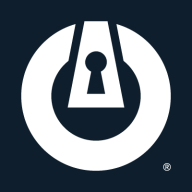

Fortinet FortiNAC and ThreatLocker Zero Trust Endpoint Protection compete in the network security and endpoint protection categories respectively. Fortinet FortiNAC seems to have the upper hand in flexibility and network visibility, while ThreatLocker focuses on application control and zero trust strategies.
Features: Fortinet FortiNAC offers auto switch port tagging, network enrollment solutions, and performs compliance checks for antivirus updates. It provides excellent network visibility and supports various deployment modes, including customizable dashboards. ThreatLocker emphasizes application control with robust allowlisting and ring-fencing features. Its application whitelisting and elevation control provide real-time software usage and strong threat detection, offering comprehensive insight into application usage to reduce attack surfaces.
Room for Improvement: Fortinet FortiNAC could improve integration with third-party products and user-friendly interface design. The setup process is often noted as cumbersome, and could use better documentation and training. ThreatLocker could benefit from more flexible training schedules, improved user interface, and transparency in support. It also needs better integration with PSA systems and should address network saturation during policy updates.
Ease of Deployment and Customer Service: Fortinet FortiNAC offers robust on-premises deployment options and stable support, though some users report mixed experiences with response times and global support reach. ThreatLocker provides versatile deployment options, including on-premises and cloud solutions. Its support is seen as efficient, although the user portal is sometimes considered overwhelming, affecting the speed of support responses.
Pricing and ROI: Fortinet FortiNAC's pricing is reasonable, though it can be costly compared to competitors like Cisco ISE, with users recognizing ROI in network security and reduced operational expenses. ThreatLocker is perceived as reasonably priced with flexible tiers, ensuring accessibility for MSPs and a good balance of cost and functionality, which helps reduce tool redundancy and maintain customer satisfaction.
If something were to happen without ThreatLocker, the cost would be huge, and thus, having it is definitely worth it.
The main return on investment is peace of mind, knowing that with ThreatLocker on any endpoint, it will almost always block all malicious code or exploits, even zero-day exploits.
It keeps malware, Trojans, and ransomware at bay.
They provide sessions to help with various questions.
They could do more to improve, not because of the product itself but because of the support they provide.
They have been very responsive, helpful, and knowledgeable.
I would rate their customer support a ten out of ten.
Their support is world-class.
The pricing model makes it challenging as the cost is substantial due to the per-node licensing model.
I started off with just the servers, and within a month and a half, I set up the entire company with ThreatLocker.
It seems to primarily operate on the endpoints rather than at a central location pushing out policies.
I would rate it a ten out of ten for scalability.
For five years, we have not had a problem.
Once deployed, it downloads the policies locally, so even if the computer doesn't have internet, it doesn't matter.
It has been very stable, reliable, and accessible.
Improvement in the interface design would make FortiNAC a better solution.
The graphical user interface (GUI) of Fortinet FortiNAC is very poor compared to competitors like Forcepoint and Cisco ISE.
Controlling the cloud environment, not just endpoints, is crucial.
This is problematic when immediate attention is needed.
Comprehensive 24-hour log monitoring is a valuable enhancement for both business and enterprise-level users.
Fortinet FortiNAC is relatively cheap compared to other solutions.
After conversations with other partners, it became clear we underpriced it initially, which caused most of our issues.
We are moving towards the Unified solution, where they basically bundle everything together, providing us better stability with the ability to bring in new product offerings without having to go back to the customer and say, 'This is going to cost you.'
I had a really good deal at the time, and it continues to be cost-effective.
I appreciate the feature where it can connect with different vendor equipment, regardless of the network devices from other vendors.
The main advantage of Fortinet FortiNAC is its integration with the entire Fortinet product portfolio.
ThreatLocker Zero Trust Endpoint Protection Platform's ability to block access to unauthorized applications has been excellent.
It protects our customers.
The major benefit is fewer breaches overall, as nothing can be run without prior approval. This helps my company protect its data and secure itself effectively.


Fortinet's FortiNAC is a network access control solution that provides visibility, control, and automated response for everything that connects to the network, enhancing the security fabric. FortiNAC protects against Internet of Things (IoT) threats, extends control to third-party devices, and orchestrates automated responses to a variety of networking events.
Using many information and behavior sources, FortiNAC delivers extensive profiling of even headless devices on your network, allowing you to precisely identify what's on your network.
You can change the configurations of switches and wireless equipment from more than 70 vendors to implement micro-segmentation regulations. You can also extend the security fabric's reach in diverse contexts.
With FortiNac, you can respond in seconds to events in your network to stop attacks from spreading. When the relevant behavior is seen, FortiNAC offers a rich and customized set of automation policies that can rapidly trigger configuration changes.
Fortinet FortiNAC Features
Fortinet FortiNAC has many valuable key features. Some of the most useful ones include:
Fortinet FortiNAC Benefits
There are many benefits to implementing DX Spectrum. Some of the biggest advantages the solution offers include:
Reviews from Real Users
Fortinet FortiNAC stands out among its competitors for a number of reasons. Two major ones are its robust network segmentation and its device visibility. PeerSpot users take note of the advantages of these features in their reviews:
A Senior Proposal Manager at a tech services company writes of the solution, “The network segmentation is the most important part of the solution. The integration with the Zero Trust Access solution is a crucial part of segmenting your network.”
Eranjaya K., Security Engineer at Eguardian lanka, notes, “We use Fortinet FortiNAC to receive excellent visibility of our network for traffic and what devices are connected to prevent attacks.” He adds, “I have found Fortinet FortiNAC to be scalable.”
ThreatLocker Zero Trust Endpoint Protection Platform offers robust endpoint security through application control and allowlisting, safeguarding servers and workstations from unauthorized software execution.
ThreatLocker Zero Trust Endpoint Protection Platform provides extensive application control with features like ring-fencing and selective elevation, ensuring meticulous execution management. Offering learning mode and extensive support, it integrates threat detection and activity monitoring to enhance compliance, reduce costs, and bolster cybersecurity through alerts and approvals. Despite its strengths, there are areas for improvement in training flexibility, policy updates, and interface enhancements, along with challenges in handling non-digitally signed software. Deployed across environments, it works well with existing cybersecurity instruments for real-time threat prevention.
What are the top features of ThreatLocker?ThreatLocker Zero Trust Endpoint Protection Platform is widely implemented to safeguard IT infrastructures against unauthorized access and application use. In sectors where data security is paramount, this platform enables users to prevent unauthorized software installations and control device applications, ensuring real-time threat prevention and compliance with industry regulations.
We monitor all Network Access Control (NAC) reviews to prevent fraudulent reviews and keep review quality high. We do not post reviews by company employees or direct competitors. We validate each review for authenticity via cross-reference with LinkedIn, and personal follow-up with the reviewer when necessary.